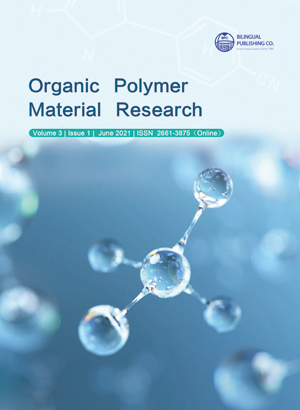Development of NR/SBR Based Rubber Compounds with Low Hysteresis and High Durability for Transmission V-Belts Applications
DOI:
https://doi.org/10.30564/opmr.v3i1.3568Abstract
Power transmission by the belts is defined as, the transmission of power by a moving pulley to one or more driven machines through a flexible non-metallic member. There are different types of V-belts available, and Transmission Belts are one of them. Transmission V-Belt is the first invented non-metallic belts. Nowadays V-belts are used in various conditions, especially high-power transmission. These V-belts are finding their importance in many heavy industries. One of the good features of this type belt is no slippage occurs during the run. NR and SBR have used elastomers and can act as a base rubber material for this purpose. This study includes the compounding improvement for transmission V-Belts with NR and SBR rubber blends. There were so many numbers of failures in different ways during the initial research. Product failure methods and effect analysis (PFMA) have done by testing the belts multiple times and it has found that the major factors for the failure and less durability were excessive heat build-up (HBU) and poor fatigue resistance, poor crack initiation and growth, the resistance of the materials. So, initially reduction of HBU has successfully made in many steps by studying the properties of various compounds with a different type of fillers combinations, rubber combinations, curing systems variations etc. We have also improved the adhesion strength with cord and fabrics. Initially, we have taken one compound showing better properties in all aspects and have taken Belt Trial. And after some more improvement, we have found a compound showing better properties in all the cases than first trial and regular trials. By using that compound, we have developed Belts and showing better durability than earlier experiments and regular production.Keywords:
Rubber, V-Belts, Power Transmission, NR, SBR, Fatigue, FailuresReferences
[1] W. V. Mars, A. Fatemi, ‘Factors That Affect the Fatigue Life of Rubber: A Literature Survey’, Journal of Rubber Chemistry and Technology, Vol. 77, No. 3, pp. 391-412, 2004.
[2] Sundararaman S., Saikrishna, “Mode-I fatigue crack growth analysis of V-ribbed belts.” Finite Elements in Analysis and Design 43.11 (2007): 870-878.
[3] Kar, Kamal K., and Anil K. Bhowmick. “Hysteresis loss in filled rubber vulcanizates and its relationship with heat generation.” Journal of Applied PolymerScience 64.8 (1997): 1541-1555.
[4] Sundararaman, Saikrishna, “Temperature-dependent fatigue-failure analysis of V - ribbed serpentine belts.” International Journal of Fatigue 31.8 (2009): 1262-1270.
[5] P. Wongwitthayakool, P. Saeoui, and C. Sirisinha, ‘Prediction of heat build-up behaviour under high load by use of conventional viscoelastic results in carbon black filled HNBR’, Plastics, Rubber and Composites 2011 Vol 40 No 5.
[6] Fanzhu Li and Jun Liu, “Numerical simulation and experimental verification of heat build-up for rubber compounds”,Polymer; Vol - 101(199-207); 2016.
[7] Chandrashekhara K.; ASME; Vol. 127, Nov-2005.
[8] Milan S. Banic, Dušan S. Stamenkovi, ‘Prediction Of Heat Generation In Rubber Or Rubber-Metal Springs’, Thermal Science, Year 2012, Vol. 16, Suppl. 2, Pp. S593-S606.
[9] Rajesh, C.; “Cure characteristics and mechanical properties of short nylon fiber-reinforced nitrile rubber composites.” Journal of Applied Polymer Science 92.2 (2004): 1023-1030.
[10] V. Le Saux, Y. Marco, S. Calloch, P. Charrier, D. Taveau, ‘Heat build Up of Rubber Under Cyclic Loadings: Validation of an Efficient Demarch to Predict the Temperature Fields’, Rubber Chemistry and Technology, Vol. 86, No. 1, Pp. 38-56 (2013).
[11] Andriyana, E. Verron, ‘Prediction of fatigue life improvement in natural rubber using configurational stress’, International Journal of Solids and Structures.44 (2007) 2079-2092.
[12] Partha P. Sarkar, S.K. Ghosh, B.R. Gupta, and Anil K. Bhowmick, “Studies on adhesion between rubber and fabric and rubber and rubber in heat-resistant conveyor belt”, International Journal of Adhesion and Adhesives, Vol.9 No.1 January 1989.
[13] Wallace D. Erickson, Belt Selection and Applications for Engineers by GATES Rubber Company; Marcel Dekker Inc.
[14] Anil K. Bhowmick, Malcolm M. Hall, Henry A. Benerey, Rubber Products and Manufacturing Technology by, Marcel Dekker, Inc.
[15] J. White, S. K. De, K. Naskar; Rubber Technologist’s Handbook, Vol.-2 by, Rapra Technology Limited, 2009.
[16] Alan N. Gent, Engineering with Rubber, HANSER Publishers, 2012.
[17] J. B. Donnet, Carbon Black: Science and Technology, CRC Press, 1993.




 Asit Baran Bhattacharya
Asit Baran Bhattacharya





